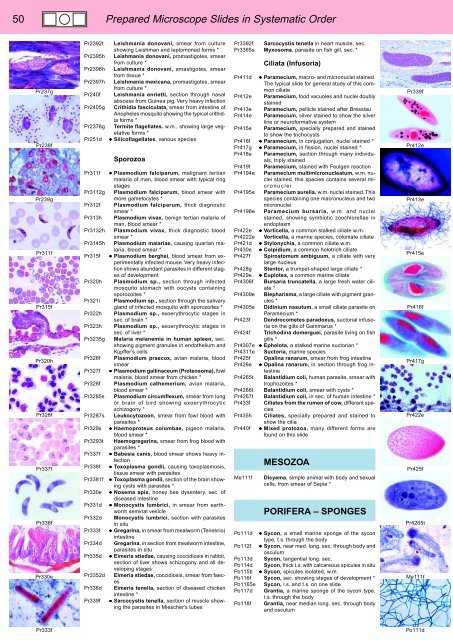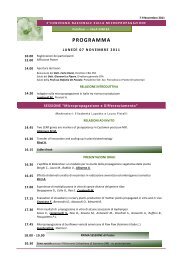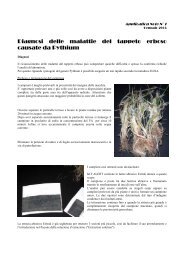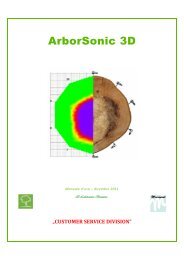BIOLOGY - microscopia.info
BIOLOGY - microscopia.info
BIOLOGY - microscopia.info
You also want an ePaper? Increase the reach of your titles
YUMPU automatically turns print PDFs into web optimized ePapers that Google loves.
50<br />
Prepared Microscope Slides in Systematic Order<br />
Pr237g<br />
Pr238f<br />
Pr239g<br />
Pr311f<br />
Pr315f<br />
Pr320h<br />
Pr328f<br />
Pr337f<br />
Pr338f<br />
Pr330e<br />
Pr2392t<br />
Pr2395h<br />
Pr2396h<br />
Pr2397h<br />
Pr240f<br />
Pr2405g<br />
Pr2378g<br />
Pr251d<br />
Pr311f<br />
Pr3112g<br />
Pr312f<br />
Pr313h<br />
Pr3132h<br />
Pr3145h<br />
Pr315f<br />
Pr320h<br />
Pr321i<br />
Pr322h<br />
Pr323h<br />
Pr3235g<br />
Pr326f<br />
Pr327f<br />
Pr328f<br />
Pr3285s<br />
Pr3287s<br />
Pr329s<br />
Pr3293t<br />
Pr337f<br />
Pr338f<br />
Pr3381f<br />
Pr330e<br />
Pr331d<br />
Pr332d<br />
Pr333f<br />
Pr334d<br />
Pr335d<br />
Pr3352d<br />
Pr336d<br />
Pr339f<br />
Leishmania donovani, smear from culture<br />
showing Leishman and leptomonad forms *<br />
Leishmania donovani, promastigotes, smear<br />
from culture *<br />
Leishmania donovani, amastigotes, smear<br />
from tissue *<br />
Leishmania mexicana, promastigotes, smear<br />
from culture *<br />
Leishmania enrietti, section through nasal<br />
abscess from Guinea pig. Very heavy infection<br />
Crithidia fasciculata, smear from intestine of<br />
Anopheles mosquito showing the typical crithidia<br />
forms *<br />
Termite flagellates. w.m., showing large vegetative<br />
forms *<br />
• Silicoflagellates, various species<br />
Sporozoa<br />
• Plasmodium falciparum, malignant tertian<br />
malaria of man, blood smear with typical ring<br />
stages<br />
Plasmodium falciparum, blood smear with<br />
more gametocytes *<br />
Plasmodium falciparum, thick diagnostic<br />
smear *<br />
Plasmodium vivax, benign tertian malaria of<br />
man, blood smear *<br />
Plasmodium vivax, thick diagnostic blood<br />
smear *<br />
Plasmodium malariae, causing quartan malaria,<br />
blood smear *<br />
• Plasmodium berghei, blood smear from experimentally<br />
infected mouse. Very heavy infection<br />
shows abundant parasites in different stages<br />
of development<br />
Plasmodium sp., section through infected<br />
mosquito stomach with oocysts containing<br />
sporozoites *<br />
Plasmodium sp., section through the salivary<br />
gland of infected mosquito with sporozoites *<br />
Plasmodium sp., exoerythrocytic stages in<br />
sec. of brain *<br />
Plasmodium sp., exoerythrocytic stages in<br />
sec. of liver *<br />
Malaria melanemia in human spleen, sec.<br />
showing pigment granules in endothelium and<br />
Kupffer’s cells<br />
Plasmodium praecox, avian malaria, blood<br />
smear<br />
• Plasmodium gallinaceum (Proteosoma), fowl<br />
malaria, blood smear from chicken *<br />
Plasmodium cathemerium, avian malaria,<br />
blood smear *<br />
Plasmodium circumflexum, smear from lung<br />
or brain of bird showing exoerythrocytic<br />
schizogony *<br />
Leukocytozoon, smear from fowl blood with<br />
parasites *<br />
• Haemoproteus columbae, pigeon malaria,<br />
blood smear *<br />
Haemogregarina, smear from frog blood with<br />
parasites *<br />
• Babesia canis, blood smear shows heavy infection<br />
• Toxoplasma gondii, causing toxoplasmosis,<br />
tissue smear with parasites<br />
• Toxoplasma gondii, section of the brain showing<br />
cysts with parasites *<br />
• Nosema apis, honey bee dysentery, sec. of<br />
diseased intestine<br />
• Monocystis lumbrici, in smear from earthworm<br />
seminal vesicle<br />
Monocystis lumbrici, section with parasites<br />
in situ<br />
• Gregarina, in smear from mealworm (Tenebrio)<br />
intestine<br />
Gregarina, in section from mealworm intestine,<br />
parasites in situ<br />
• Eimeria stiedae, causing coccidiosis in rabbit,<br />
section of liver shows schizogony and all developing<br />
stages<br />
Eimeria stiedae, coccidiosis, smear from faeces<br />
Eimeria tenella, section of diseased chicken<br />
intestine *<br />
• Sarcocystis tenella, section of muscle showing<br />
the parasites in Miescher’s tubes<br />
Pr3392f Sarcocystis tenella in heart muscle, sec.<br />
Pr3365s Myxosoma, parasite on fish gill, sec. *<br />
Ciliata (Infusoria)<br />
Pr411d • Paramecium, macro- and micronuclei stained.<br />
The typical slide for general study of this common<br />
ciliate<br />
Pr412e Paramecium, food vacuoles and nuclei doubly<br />
stained<br />
Pr413e Paramecium, pellicle stained after Bresslau<br />
Pr414e Paramecium, silver stained to show the silver<br />
line or neuroformative system<br />
Pr415e Paramecium, specially prepared and stained<br />
to show the trichocysts<br />
Pr416f • Paramecium, in conjugation, nuclei stained *<br />
Pr417g • Paramecium, in fission, nuclei stained *<br />
Pr418e Paramecium, section through many individuals,<br />
triply stained<br />
Pr419f Paramecium, stained with Feulgen reaction<br />
Pr4194e Paramecium multimicronucleatum, w.m. nuclei<br />
stained. this species contains several micronuclei<br />
Pr4195e Paramecium aurelia, w.m. nuclei stained. This<br />
species containing one macronucleus and two<br />
micronuclei<br />
Pr4196e Paramecium bursaria, w.m. and nuclei<br />
stained, showing symbiotic zoochlorellae in<br />
endoplasm<br />
Pr422e • Vorticella, a common stalked ciliate w.m.<br />
Pr4222e Vorticella, a marine species, coloniate ciliate<br />
Pr421d • Stylonychia, a common ciliate w.m.<br />
Pr430e • Colpidium, a common holotrich ciliate<br />
Pr427f Spirostomum ambiguum, a ciliate with very<br />
large nucleus<br />
Pr428g Stentor, a trumpet-shaped large ciliate *<br />
Pr429e • Euplotes, a common marine ciliate<br />
Pr4306f Bursaria truncatella, a large fresh water ciliate<br />
*<br />
Pr4309e Blepharisma, a large ciliate with pigment granules<br />
*<br />
Pr4305e Didinium nasutum, a small ciliate parasite on<br />
Paramecium *<br />
Pr423f Dendrocometes paradoxus, suctorial infusoria<br />
on the gills of Gammarus *<br />
Pr424f Trichodina domerguei, parasite living on fish<br />
gills *<br />
Pr4307e • Ephelota, a stalked marine suctorian *<br />
Pr4311e Suctoria, marine species<br />
Pr425f Opalina ranarum, smear from frog intestine<br />
Pr426e • Opalina ranarum, in section through frog intestine<br />
Pr4265t Balantidium coli, human parasite, smear with<br />
trophozoites *<br />
Pr4266t Balantidium coli, smear with cysts *<br />
Pr4267t Balantidium coli, in sec. of human intestine *<br />
Pr433f Ciliates from the rumen of cow, different species<br />
Pr435h Ciliates, specially prepared and stained to<br />
show the cilia<br />
Pr440f • Mixed protozoa, many different forms are<br />
found on this slide<br />
Me111f<br />
MESOZOA<br />
Dicyema, simple animal with body and sexual<br />
cells, from smear of Sepia *<br />
PORIFERA – SPONGES<br />
Po111d • Sycon, a small marine sponge of the sycon<br />
type, t.s. through the body<br />
Po112f • Sycon, near med. long. sec. through body and<br />
osculum<br />
Po113d Sycon, tangential long. sec.<br />
Po114d Sycon, thick t.s. with calcareous spicules in situ<br />
Po115b • Sycon, spicules isolated, w.m.<br />
Po116f Sycon, sec. showing stages of development *<br />
Po1165e Sycon, l.s. and t.s. on one slide<br />
Po117d Grantia, a marine sponge of the sycon type,<br />
t.s. through the body<br />
Po118f Grantia, near median long. sec. through body<br />
and osculum<br />
Pr339f<br />
Pr412e<br />
Pr413e<br />
Pr415e<br />
Pr416f<br />
Pr417g<br />
Pr422e<br />
Pr425f<br />
Pr4265t<br />
Me111f<br />
Pr333f<br />
Po111d







